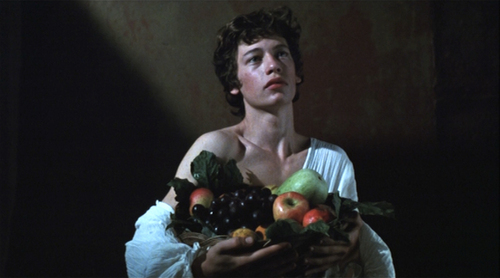
In July 1597, a barber named Luca testified in court in a case of a missing dagger and cloak, he said: “This painter is a stocky young man…with a thin black beard, thick eyebrows and black eyes, who goes dressed all in black, in a rather disorderly fashion, wearing a black hose that is a little bit threadbare, and who has a thick head of hair, long over his forehead.”
He was describing Caravaggio, one of the most prominent names when talking about baroque and renaissance painting.
Michelangelo Merisi da Caravaggio was a product of the times he lived in. He lost a great part of his family due to the bubonic plague that ran through Milan in the summer of 1576. It is discussed that this fact contributed to the growth of a violent and rebellious temperament that was in the basis of the painter’s great artistic accomplishments and his poor life choices.
Caravaggio’s formative years were dominated by the influence of Saint Charles Borromeo. Borromeo was a man of faith whose preaching was in great part centred on the ideas that the plague was caused by the sin and corruption that dominated the Catholic Church and that redemption was only possible by returning to the basic teachings of Christianity, particularly, honesty and poverty. Therefore, it was the duty of the church to aid the poor, who should be regarded as Christ’s living images.
This line of thinking dominated Caravaggio’s career and modulated his style and methods. Which are characterized by an original use of the chiaroscuro technique (creating extreme contrasts of light and dark in order to direct the eye towards the drama of the figures and details such as a gesture or a look of despair).
His themes were mostly related to religion and centralized in the suffering of Jesus and his apostles who were often painted with extreme realism, illuminated by a single source of light amidst total darkness as if they were tableaux vivants. To these characteristics was given a name – Tenebrism – and Caravaggio was considered the style’s founding father.
The use of a low-tone palette and the painting of biblical figures dressed in contemporary garments of the 17th Century, with dirty nails and feet can also be accounted as other elements of Caravaggio’s style. A style that amazed as much as shocked his peers and contemporaries.
To achieve such perfection Caravaggio recurred to real life models, often prostitutes and people from lower classes and these connections led to his arrest several times mostly for disturbing the peace. He murdered a man, a crime that haunted him for the rest of his life.
He joined the Knights of Malta for a brief period in order to obtain pardon but attacked one of the senior knights and fled living the rest of life being hunted by revengers. He died on July 18 or 19 and was buried in an unmarked grave. Caravaggio’s influence in art is immense and this list features a couple of the many films which were influenced by the painter’s visual style and themes.
1. Destiny (1921, Fritz Lang)
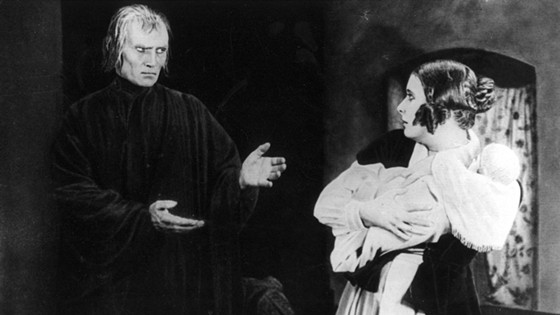
Caravaggio’s tenebrism had undoubtedly a great influence on German Expressionism. His original use of the chiaroscuro technique, emphasized details like a gesture or a facial expression.
This technique was widely used in German Expressionism and “Destiny” is a great example of that. Produced by the powerful Erich Pommer, “Destiny”, revolves around death who gives a young woman three chances to save her lover. If successful, proving that love can defeat death, life shall be restored to the young man so that he can reunite with his sweetheart.
When watching this film not only does the use of light but also all the dominating dark mood, as well as, the strong visual religious references (crosses, gestures and even the use of long candles) remind us of the baroque period in which the painter lived and portrayed. The pain, the depth of feeling in a Caravaggio’s painting can certainly be felt in “Destiny” which is also celebrated by its use of special effects.
2. Faust (1926, F. W. Murnau)
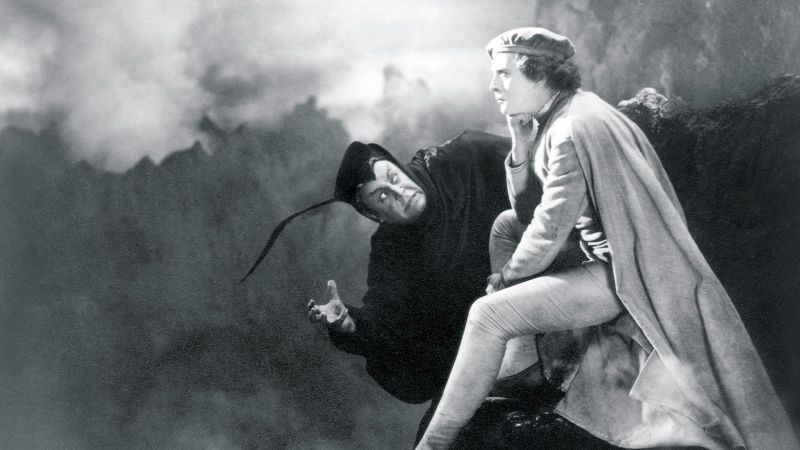
One of the most sonant names in German Expressionism is F. W. Murnau who also figures in this list, particularly, because of “Faust”. Which is a tale where Mephisto, a demon mainly popular in German Folklore, makes a bet with an Archangel that he can find and corrupt a good man. In case the demon is successful he shall gain complete control over the Earth, where he shall enforce his sole will.
“Faust” was considered one of the most expensive and complex productions of the German Expressionism and is remembered today for its use of special effects, its austere and magnificent sets, as well as, a symbol of the expressionist technique whose roots can be traced into art movements such as the German romanticism, the baroque and renaissance.
Some of these expressionist features and techniques can also be found in other masterpieces Murnau later directed in America, like Sunrise (1927) and City Girl (1930).
3. Citizen Kane (1941, Orson Welles)
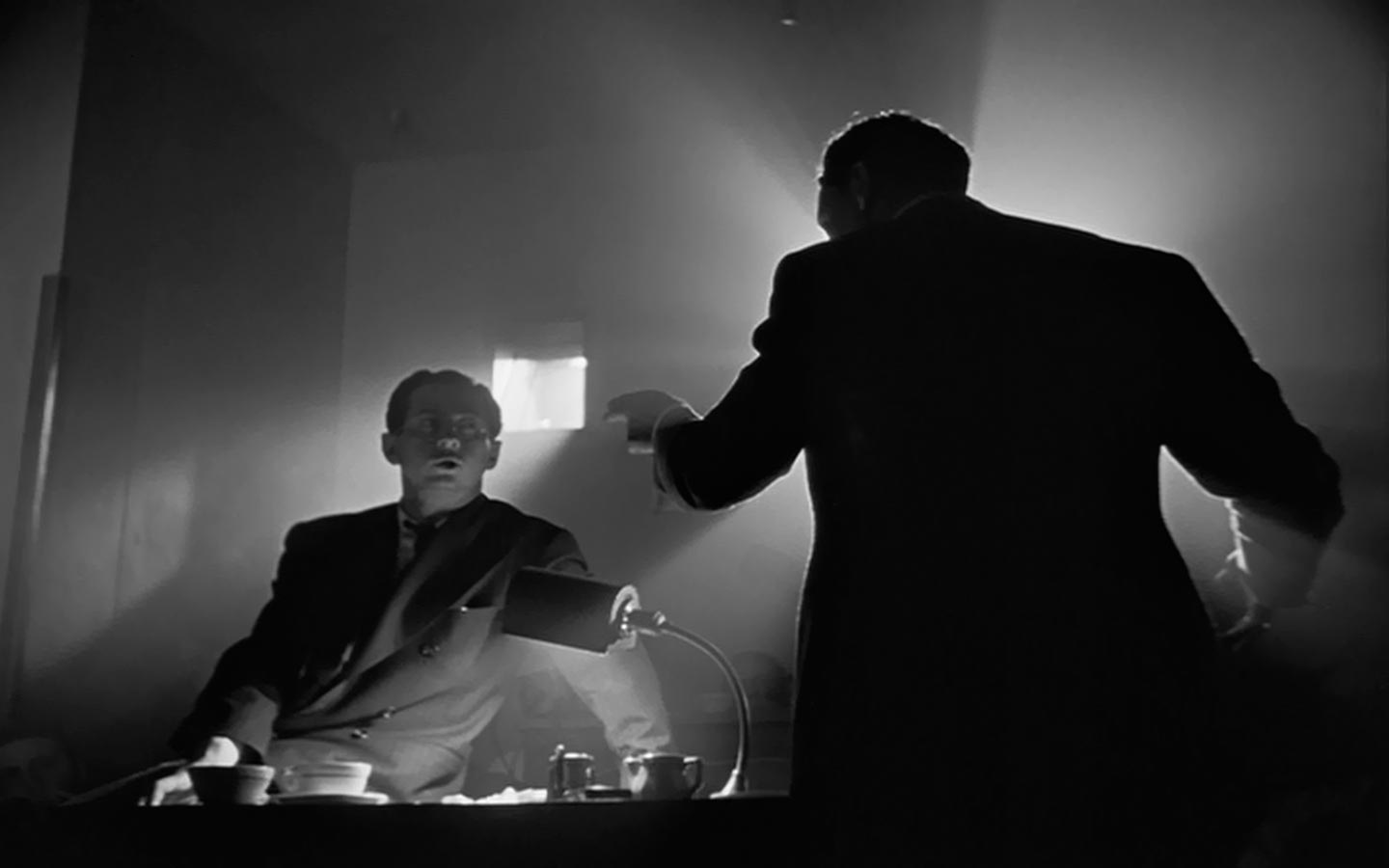
Another example of the use of Caravaggio’s tenebrism is unarguably one of Orson Welle’s best contributions to film art – “Citizen Kane”. In various moments of this film, which follows the reconstitution of a publishing tycoon’s life in order to discover the meaning of his final words, the use of light emphasizing figures and the drama associated with each scene remind Caravaggio’s works such as “The Calling of Saint Matthew” (1599-1600), The Betrayal of Christ (1602) or “Saint Jerome Writing” (1605-1606). But one of the most interesting aspects that connect Welles and Caravaggio is probably the relationship both have with the concept of stage.
The painter and filmmaker’s framing style results from a careful preparation of scenes as if they were presented on a stage dimly lit totally absorbing the viewer’s eyes.
The silence in Welle’s films equals the suspended actions on Caravaggio’s paintings where gestures, words or sudden movements become suspended, in time. This relationship between Orson Welles and baroque painting continued throughout his career, most notably in the director’s Shakespearean adaptations.
4. Day of Wrath (1943, Carl Theodor Dreyer)
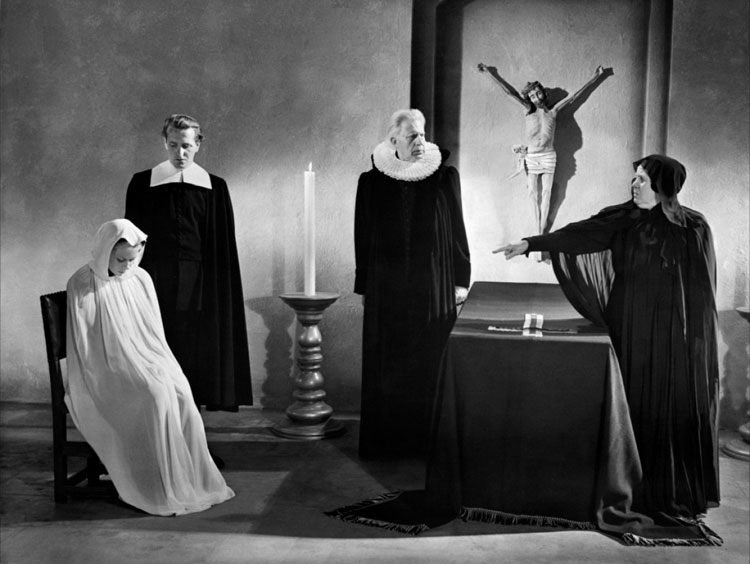
Even though “Vampyr” was carefully considered to feature on this list the choice over “Day of Wrath” is explained not only by the characteristics it shares with Caravaggio’s painting (the chiaroscuro technique and religious motifs) but also the film’s sixteen century setting which is part illustrative of the kind of world the painter inhabited.
Caravaggio was considered a violent man who lived in a time where violence and religious passion dominated the thinking and action of all men and women. And in “Day of Wrath” all this surfaces in the story of Anne.
Set in Denmark during the witch-hunts of the 17th Century, a young woman named Anne married to an aging pastor, falls in love with her stepson and is ultimately accused of witchcraft once her husband suddenly dies.
5. He Walked by Night (1948, Alfred L. Werker and Anthony Mann)
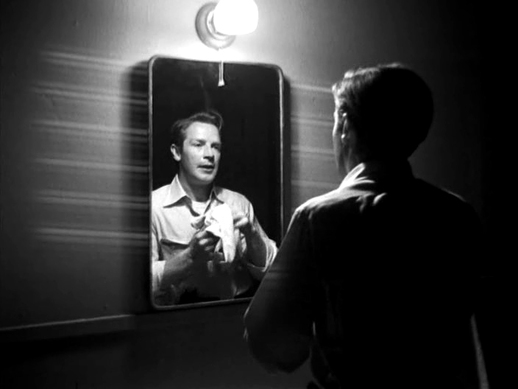
Another film movement widely influenced by baroque painting and, particularly, by the painter’s unique use of the chiaroscuro technique is film noir. And this film features this list specifically due to cinematographer John Alton, who during the course of his career became known for his original style that involved the creation of extreme light and dark contrasts often leaving only the characters illuminated while the surrounding environment went completely dark. Sound familiar?
“He Walked By Night”, follows an intense police hunt for an ingenious cop killer whose abilities evolve constant disguising, therefore increasing the difficulty of his arrest. Other noteworthy works by John Alton are “T-Men” (1947) directed by Anthony Mann and later “Elmer Gantry” (1960) directed by Richard Brooks.
6. The Night of the Hunter (1955, Charles Laughton)
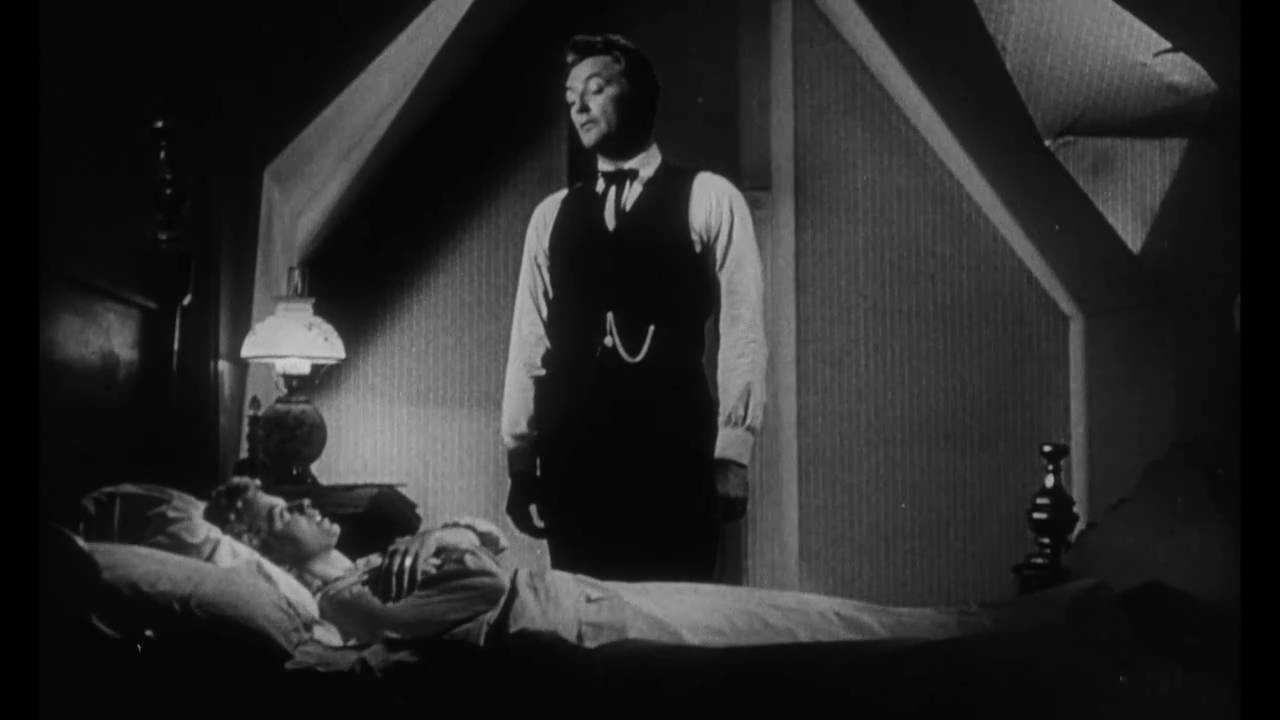
The only directorial effort made by actor Charles Laughton, “The Night of the Hunter” features Robert Mitchum in one of his most notorious roles as Harry Powell. Reverend Harry Powell, a religious fanatic marries Willa, a recently widowed woman, in order to gain access to the ten thousand dollars her late husband had stolen and hidden somewhere. The reverend spares no effort to discover the money’s hiding place which is only known by Willa’s children, John and Pearl.
Once more cinematography becomes the key element that connects this film with Caravaggio’s painting particularly works like “Francis of Assisi in Ecstasy” (1595) or “David with the head of Goliath” (1609-1610), not to mention the weight religion has in both objects film and painting. But you can either watch this film for all these reasons or just because of Lillian Gish’s unique and great screen presence.
7. The Big Combo (1955, Joseph H. Lewis)
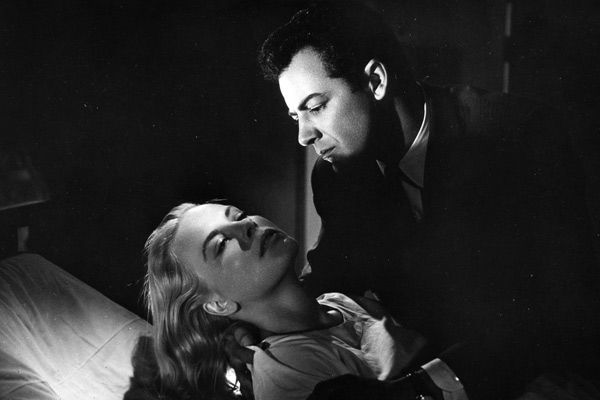
Other noir film worthy to be in this list is Joseph H. Lewi’s “Big Combo” which revolves around Leonard Diamond, a police lieutenant, in charged with the investigation on crime boss Mr. Brown which is suspended due to lack of evidence. However, Diamond develops an obsession with this case and decides to explore other sources where he can find proof of Brown’s culpability in the events that happened with his former wife Alicia. One of these sources is the boss’s current girlfriend, Susan Lowell.
The strongest reason this film can be related to Caravaggio’s painting, despite evident similarities in the use of light, is because, like many other noir pieces, it masters the ability to explore sensuality amidst a darker mood or violent setting.
Caravaggio, early in his career, explored sensuality and concepts like the forbidden fruit in works such as “Boy with a Basket of Fruit (1593), “The Musicians” (1595) or “Bacchus” (1595) and there seems to be a similarity between the depiction of the male form in these paintings and the way lighting worked around the woman’s body in film noir. Thus, “The Big Combo” serves as an example among many other films like “Double Indemnity” (1944) or “Gilda” (1946).